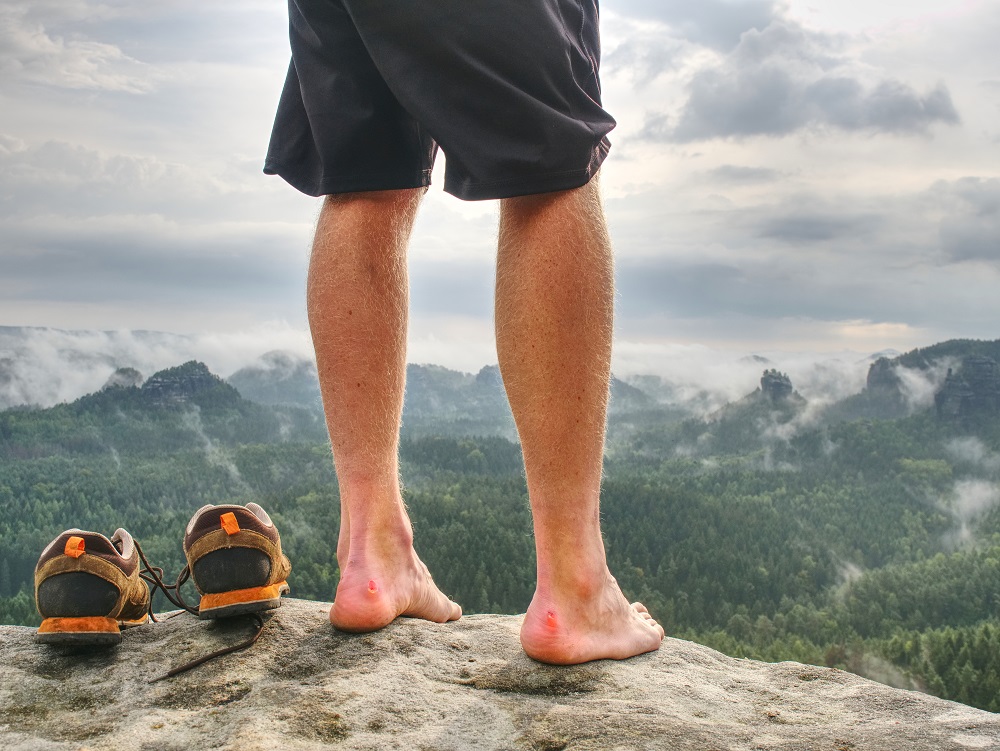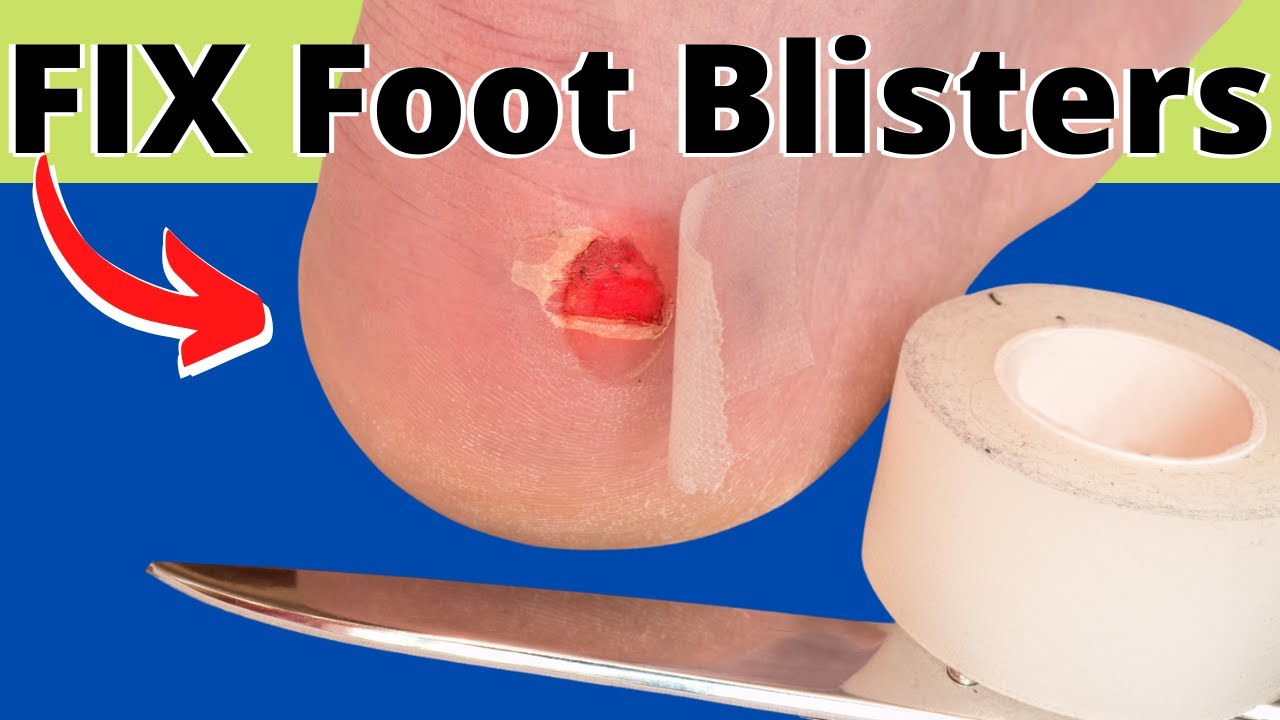Foot & Ankle Injury Treatment
Painful and Sore Blisters on the Foot and Toe [Blood blister treatment]
Painful and Sore Blisters on the Foot and Toe should be offloaded to reduce damage and pain. We review the best blood blister treatments!
Table of Contents
How To Treat FOOT Blisters, TOE Blisters & HEEL Blisters FAST
Painful blisters on toes & painful blisters on feet summary video:
🦶 Do you have a bottom of the foot blister? Toe Blister or Heel Blister? 🦶
- We will show you how to prevent foot blisters and see if they are dangerous! We go over the best ways how to treat blisters on feet and toes.
- These include blood blisters and friction blisters on the back of the heel and the bottom of the feet!
- We answer questions like: should you pop a blood blister on the foot? or Pop a small blister on the toe?
- So learn how to prevent and treat blisters on the bottom of your foot!

Blister pictures & photo gallery:
Blister treatment overview:
Painful blisters on the foot and toe are a common problem caused by friction from shoes or clothing, which repeatedly rubs on the skin.
- Blisters usually resolve by themselves if they are small and you stop putting stress on them.
- But if a blister is larger and has some obvious fluid buildup; it might be best to drain it so that more pressure doesn’t spread the blister.
- The following is a complete guide for treating itchy foot blisters, prevention, and foot accessory advice.
Preventing Painful And Sore Foot Blisters
- Ensure that shoes fit correctly.
- Protect the potential ‘hot spots’ by applying a second skin and/or taping. Click here for details of how to tape the foot.
- If you wear boots such as those required for mountain walking, ensure all seams are flat inside the boot.
- Take care of the boots, do not leave them on radiators or near heaters. This may cause the leather to shrink, and seams protrude.
- Keep feet as dry as possible. Wet shoes, boots, and socks will cause blisters far quicker than dry ones.
- Wherever possible, change socks regularly and use foot powder to help keep them dry.
Sore blisters to the back of the foot and heel.
Running and Painful Foot Blisters
Blisters are common among long-distance runners. All of the above can be used to help prevent developing blisters, but there are a couple of extra points which may help:
- Introduce new running shoes gradually.
- Wear socks with a double layer. The second layer stops the first one from rubbing against the skin.
- Try using petroleum jelly on areas prone to blisters. This helps the material glide over the skin, reducing friction.
- Try using zinc oxide tape on blister-prone areas to prevent friction on the skin.
What are Blood Blisters?
- Blood blisters appear red in color due to damage also occurring to a blood vessel, causing a bleed into the skin tissues.
- They tend to occur more from a sudden impact or pinching of the skin rather than repetitive friction.
- This type of blister should be treated the same way as a normal blister, although be aware that the skin underneath would be raw and usually very sore and more prone to infection due to the more serious damage.
Treatment of Painful and Sore Blisters on the Foot and Toe
- Most small blisters should be left alone, and they will usually heal fine on their own.
At the first sign of Painful and Sore Blisters on the Foot and Toe:
- The first sign of blisters will be redness over the skin, possibly at the back of the heel, the instep, or toes.
- Apply a second skin dressing or blister plaster and tape the affected area.
- Ensure the feet are dry and change socks (unless you are in the middle of a race).
- A highly effective but short-term measure is to cover the foot and affected area in petroleum jelly. This should provide instant relief from pain, but as the heat from the foot melts the petroleum jelly, it will run away and be ineffective.
- When should you pop blisters?
For larger blisters or those which are causing problems, it may be necessary to pop them. Popping blisters should be done with caution, following these guidelines.
- Make a small hole at the edge with a sterilized pin or needle, particularly if the blister is on a weight-bearing surface.
- It can be dangerous to use a non-sterile instrument as this could introduce bacteria into the site.
- Do not drain a blood-filled blister.
- Drain the fluid but leave as much of the skin as possible covering the wound. This is an important protective layer for the underlying skin and will help to prevent infected blisters.
- Clean the blister with a sterilizing wipe.
- Cover the wound with a second skin or blister plaster – take the time to apply it correctly.
- For additional security, apply tape over the top.
How to get rid of Painful and Sore Blisters on the Foot and Toe
- Blisters will usually drain and heal on their own. Even if you have had to pop a blister, you should clean the area, cover it to protect it, and leave it to heal naturally.
- If no pain, leave them alone!
Good Luck with your Painful and Sore Blisters on the Foot and Toe!
